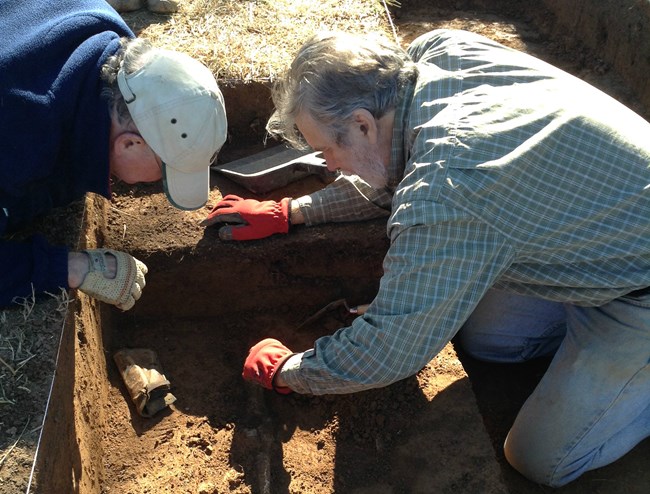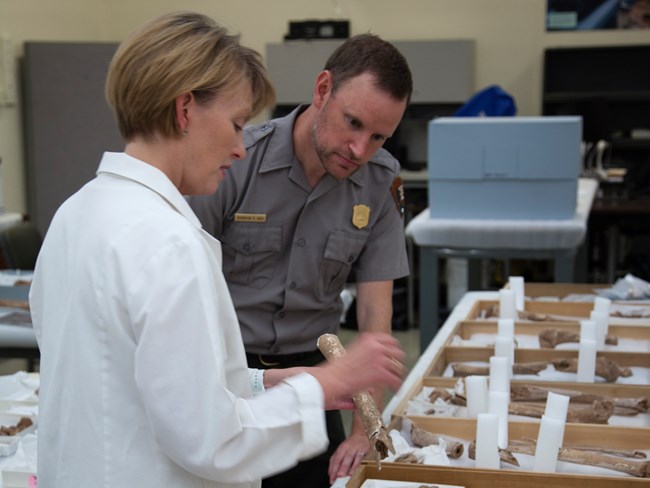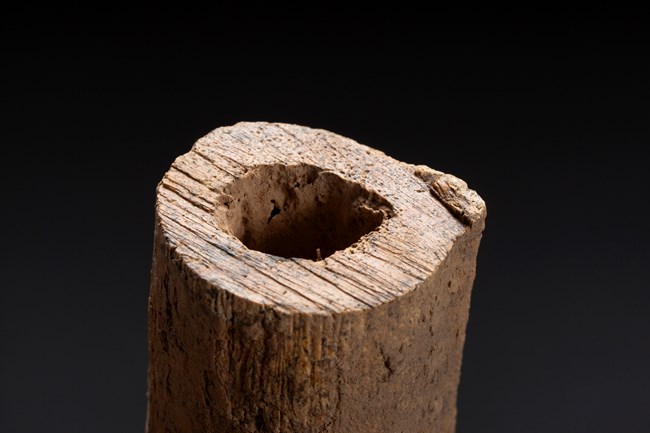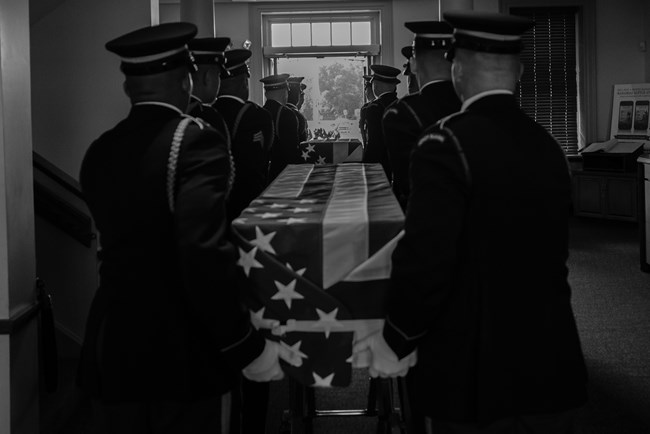
Friday, June 22, 2018
Forthcoming Non Fiction: Robert E. Lee Indicted For a Variety of Sins During June 1865 by the Citizens of Norfolk, Virginia

From the Publisher: History has been kind to Robert E. Lee. Woodrow Wilson
believed General Lee was a “model to men who would be morally great.”
Douglas Southall Freeman, who won a Pulitzer Prize for his four-volume
biography of Lee, described his subject as “one of a small company of
great men in whom there is no inconsistency to be explained, no enigma
to be solved.” Winston Churchill called him “one of the noblest
Americans who ever lived.” Until recently, there was even a stained
glass window devoted to Lee's life at the National Cathedral in
Washington, D.C.
Thursday, June 21, 2018
Manassas Amputation Pit Discovery: More News, Enfield Bullets Key to Dating

The Washington Post reports . . .
The park service
says it’s the first time that a surgeon’s pit at a Civil War battlefield has
been excavated and studied. The complete remains of two soldiers were found in
the pit, along with 11 partial limbs.
Researchers believe the bodies were those of Union soldiers who died in
the Second Battle of Bull Run, also known as the Second Battle of Manassas. The
battle was fought in August 1862.
Researchers are
confident the remains belong to Union soldiers because buttons from a Union
jacket were found in the pit. In addition, one of the soldiers had an Enfield
bullet lodged in his thigh bone — those bullets were used almost exclusively by
Confederate soldiers.
The Enfield
bullets also provide a key clue that the pit is from the second Bull Run
battle, not the first. Those bullets were not yet in use during the first Bull
Run battle, which was the first major battle of the war. The location of the
pit also fits with the battle lines from the second battle.
Washington Post Text Source: Washington Post
The two soldiers — referred to as Burial 1, with
the embedded bullet, and Burial 2 — were placed side by side in the pit.
The severed limbs were carefully arranged next to them, like broken
tree branches, according to a photograph from the dig. Burial 1 probably went in first, because Burial 2 was partially on top of him.
The
hole was about a foot deep, and over the years farm plows had carried
off the skull of one man and part of the skull of the other. Anthropologists
from the Smithsonian Institution have studied the injuries suffered by
the two soldiers and examined the cut marks on the severed limbs made by
the surgeons’ saws. There were nine severed legs and two arms in all.
Washington Post Text Source: Washington Post
News--Second Manassas Battlefield Field Hospital's Amputation Site Discovery
Second Manassas Battlefield Field Hospital's Amputation Site: Discovery, Excavation, Evaluation, Identification, Reburial
 In August 1862, two Union soldiers were gravely wounded at the Battled of Second Manassas.
They were brought to a field hospital, though both died as a result of
their injuries. Their bodies were laid to rest in a shallow burial pit,
intermixed with amputated limbs from other soldiers wounded in the
battle. Then they were lost to history. The National Park Service (NPS) first encountered the remains during a utility project in 2014. With help from the Smithsonian Institution the NPS was able to identify the remains as Union soldiers, and worked
with the Army to give these soldiers an honorable final resting place.
In August 1862, two Union soldiers were gravely wounded at the Battled of Second Manassas.
They were brought to a field hospital, though both died as a result of
their injuries. Their bodies were laid to rest in a shallow burial pit,
intermixed with amputated limbs from other soldiers wounded in the
battle. Then they were lost to history. The National Park Service (NPS) first encountered the remains during a utility project in 2014. With help from the Smithsonian Institution the NPS was able to identify the remains as Union soldiers, and worked
with the Army to give these soldiers an honorable final resting place.
In 2014, Manassas National Battlefield Park was working on a utility project. Although previous archeological testing of the area did not identify any significant finds, during the utility installation several small fragments of bone were unearthed and collected by the archeologist assigned to monitor the work.
At first, no one knew exactly what, or when, the bone fragments were from. To find out, the NPS sent the fragments to the the forensic anthropology lab at the Smithsonian Institution's National Museum of Natural History. Researchers there determined that the fragments were human, and that they dated to the Civil War. What's more, a piece of femur bone they were able to piece together had been sawed off, consistent with an amputation. All that information led to the conclusion that further excavation was needed. It was possible that something incredibly rare was on the site, and this was an invaluable opportunity to study and preserve the findings.

Beneath the surface, they found two nearly-complete human skeletons, and several artifacts including buttons from a Union sack coat, a .577 Enfield bullet, three pieces of .31 caliber lead buckshot, and an assemblage of eleven arms and legs. The discovery was something incredibly rare: a battlefield surgeon's burial pit. In fact, this was the first time such a burial pit had ever been excavated and studied at a Civil War battlefield. To learn more about who these bones belonged to, the NPS again turned to the lab at the Smithsonian to investigate.

NPS / Nathan King
Forensic anthropologists from the Smithsonian helped the NPS remove the bones from the site and moved them to a laboratory at the Smithsonian's National Museum of Natural History for further study. By analyzing the chemistry of the bones, researchers determined where the soldiers were from. Carbon isotopes and oxygen isotopes indicated they ate food and drank water from northern latitudes. Combined with the artifacts including sack coat buttons found with them, they were identified as Union soldiers.
By analyzing the teeth, joints, and bone structure of the two skeletons, scientists determined the first was a man in his late 20's who died as a result of injuries from an Enfield bullet striking his upper leg. Surprisingly, the bullet was still lodged in the femur bone, likely because it slowed as it passed through the man's cartridge box.
Research on the eleven limbs recovered from the surgeon's burial pit continues. By examining the cuts, it is possible to determine the skill of the surgeon and even his physical position relative to the patient. With help from historical records, researchers believe it may be possible to match the bones with a specific surgeon and maybe even the soldier they belonged to, a truly unique discovery.

NPS / Bryan Gorsira
After the remains were identified as soldiers, the Army expressed interest in giving the men a permanent resting place at Arlington National Cemetery. On June 19, 2018, the NPS transferred the remains of the two soldiers to the Army. The Army will inter the remains at Arlington National Cemetery in two caskets made by park rangers from a fallen tree on the battlefield.
The Union soldiers engaged in the Second Battle of Manassas showed tremendous valor. On August 30, 1862, the day these soldiers were likely wounded, Federal troops were ordered to cross an open field, assailed by crushing artillery fire and withering infantry fire from an elevated, entrenched Confederate position. Like many others that day, these soldiers gave the last full measure doing their duty.
Discovering these soldiers' remains led to valuable research that has helped us better understand what happened during the Second Battle of Manassas and of Civil War medicine. Being laid to rest in Arlington National Cemetery will honor their memory and the sacrifice of so many service members throughout our nation's history.
Full Text Source: Manassas Battlefield Field Hospital Amputation Site
Tuesday, June 12, 2018
New and Noteworthy: The War Beyond My Window
The War Outside My Window: The Civil War Diary of LeRoy Wiley Gresham, 1860-1865 Edited by Janet Elizabeth Croon, Savas Beatue Publishing, 480 pp, maps, images, medical forward, Dramatis Personae, $34.95
Residing in a family that owned two rural Georgia
plantations but residing in Macon, Georgia, LeRoy W. Gresham, has left a
remarkable document that reveals much about the daily life of a slave holding
family. Gresham is a resilient young
adult who grievously suffers from known and unknown health conditions. While
viewing a house that had recently burned down, a chimney collapsed and struck
his leg. In his future are not canes, crutches or wheelchairs. He must be
pulled around in a cart by his brother, cousins or a slave. Unknown to his
doctor or his parents is that tuberculosis has entered his body and he is
slowly degenerating. He dies in 1865 at
the age of 18.
The American Civil War is indeed outside of his window. In
1860 he gathers premonitions of the coming storm when he travels on a ship from
Savannah to Philadelphia and New York City for the purpose of being examined by
medical specialists. He notes the present of Japanese visitors walking the
streets of Philadelphia. Back home, he views it by reading newspapers,
conversing with relatives and visiting the troop trains that pass through
Macon. Sherman’s march misses Macon but the refugees from the march don’t.
If you are an environment historian, you should read the
diary for the droughts and floods that interrupt the agriculture practices of
the plantations and the fluctuating prices of food. If you are a social
historian, you should read this for his description of his family’s extended
relative connections, his education, the family’s parlor games and the diets of
a plantation household that live in a city. If you are drawn to communications
and journalism, you will find how fast news and newspapers travel between the
United States and the Confederate States. He has his favorite Northern and
Southern newspapers and he comes to an understanding of ‘fake news’ and how and
why it exists. If you are a medical
historian, you will discover how doctors understand and treat Gresham’s coughs,
back pains, headaches, nerve damage to his leg and hips. Readers will come to learn that a belladonna
plaster on the spine really, really itches.
In Gresham’s diary there are fires which destroy homes;
eleven homes and farm buildings are destroyed by fire during 1860-1861. Readers
might ponder whether these fires occur when a fire place ember pops and lands
on carpets and quilts or whether some slaves became arsonists. Funerals are a
regular occurrence. Elders and infants die; adults get very sick very quickly
and die.
Gresham is never not reading two or three books at the same
time. The works of Charles Dickens,
Wilkie Collins, James Fennimore Cooper, William Prescott [the historian] are
each on his bookshelves which hold history, travel or fiction books. If relatives come to visit him, they usually
bring a book or newspapers and then take some time to play chess with him. Also on his book shelf are manuals of chess
openings used by the experts. He does have
opinions about the New York City and Philadelphia newspaper editors.
When Gresham is outside he travels to the train station to
talk to the troops or ventures to a target range where he practices his archery
and rifle skills. With help he flies a kite. At night he studies the
constellations. During the daytime he
works on math problems, Latin and essays.
The annotated notes by Janet Elizabeth Coon are clear,
concise and insightful. There are maps, sample pages of the diary, and a list
of those relatives, neighbors and slaves mentioned in the diary. What readers
will not find in the book is ‘presentism’ inserted by the author. Race, gender, class issues are not offered in
the context of today’s social and political environment. They are not absent
from the diary though. You may read the
diary and find out what women do, slaves do, capitalists do as viewed through
the eyes of a young adult male.
There are between twelve and fifteen book awards related to
the American Civil War. The War Outside
My Window: The Civil War Diary of LeRoy Wiley Gresham, 1860-1865 will
likely be nominated several times as a ‘book of the year’. Other diaries of this caliber are by Mary Boykin
Chesnut, Sarah Morgan, Sam Watkins and the Cormany Diaries.